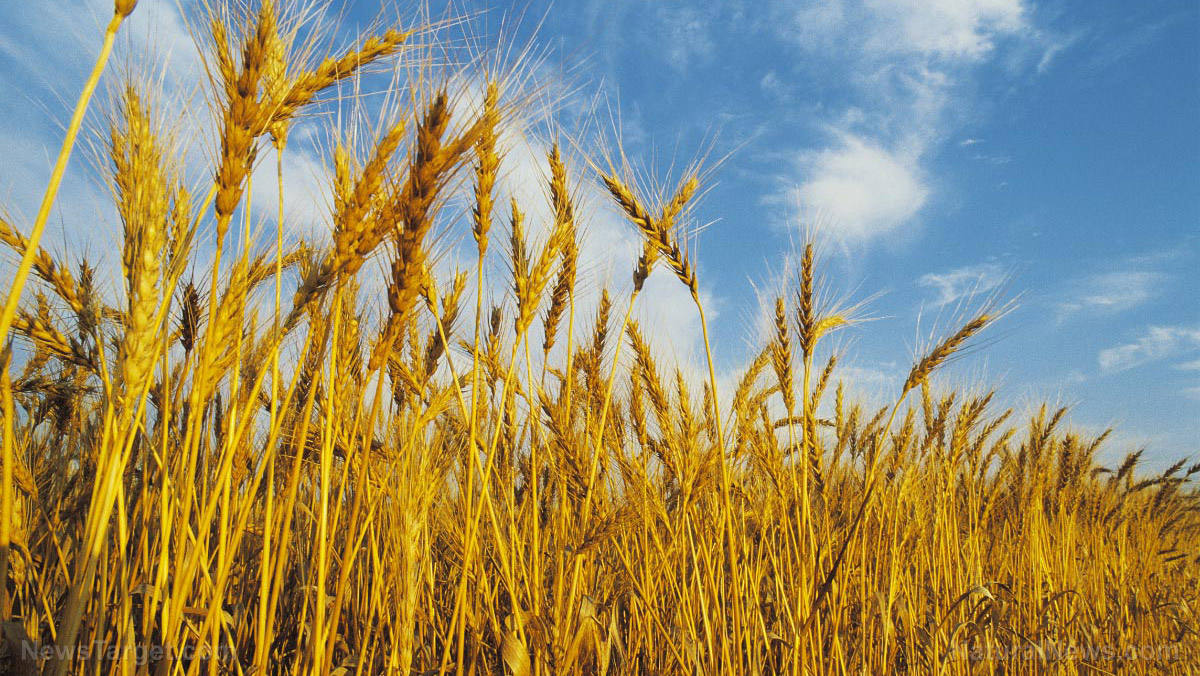Difenoconazole — toxicity, side effects, diseases and environmental impacts
12/05/2017 / By Jhoanna Robinson

Difenoconazole, which has a longer name of 1-[[2-[2-chloro-4-(4-chlorophenoxy) phenyl]-4-methyl-1,3-dioxolan-2-yl]methyl]-1H-1,2,4-triazole, is a systemic triazole fungicide that manages a broad spectrum of foliar, soil-borne, and seed diseases that are brought about by Basidiomycetes, Ascomycetes, and Deuteromycetes fungi in rice, cereals, grapes, pome fruit, potatoes, soya, stone fruit, sugar beet, and several vegetable and ornamental crops.
Difenoconazole comes in liquid flowable concentrate and solid emulsifiable concentrate formulations. The flowable concentrate is used as a seed treatment to control seed and soil-borne fungi such as common bunt, dwarf bunt, loose smut, flag smut, septoria leaf blotch and rust, seed-borne septoria, fall season powdery mildew and for partial control of fusarium root, crown root, and common root rot.
The emulsifiable concentrate, on the other hand, is applied as an emulsion of oil to serve as foliar treatment on imported bananas.
List of known side effects
Difenoconazole can cause retarded body weight development. It can also bring about slight microcytic hypochromic anemia.
Body systems affected by difenoconazole
Difenoconazole is bad for the excretory system. An extreme reduction in liver and kidney weight has been observed in people who have been exposed to difenoconazole, and this is usually indicative of an infection of that type of organ.
Difenoconazole is bad for the endocrine system. It is said to cause damage to the pituitary gland, which is called the “master gland” as it controls some of the hormone-secreting glands such as the thyroid and the adrenal glands.
Difenoconazole is bad for the female reproductive system. It causes the growth of vaginal cysts. It can also negatively contribute to the development of a fetus, causing them to develop left-eye bulges, umbilical hernias, microencephaly, a few minor deviations in skeletal formation, and cryptophthalmos, a congenital condition in which the skin is continuous over the eyeballs, resulting to the maldevelopment of the underlying cornea.
Likewise, it is detrimental to the male reproductive system. It can cause the depletion and synchrony of spermatids, meaning, there is a slightly reduced chance of the sperm reaching the egg because of a lack of coordination and slowness in movement.
Difenoconazole is bad for the central nervous sytem. It can cause convulsions, brain lesions that affect the anterior and dorsal cerebellum, an increased incidence of cellular degenerations and necrosis, and nerve fiber degeneration in the peripheral nerves (sciatic, sural, and tibial).
Items that can contain difenoconazole
Difenoconazole is a fungicide that can be applied to canola; cereals including barley, oats, rye, triticale, and wheat; cotton; potatoes; sweetcorn; and vegetables including asparagus, brassicas, and carrots.
How to avoid difenoconazole
The above-mentioned produce can contain difenoconazole, so remember to properly wash the produce that you buy in supermarkets and in farms.
Where to learn more
- Do you wash your produce? Old fashioned baking soda found to be the most effective at removing pesticide residue
- Why agricultural workers have one of the deadliest jobs on the planet
- Humanity’s chemical SUICIDE confirmed: Pesticides sprayed on food crops are wiping out food pollinators, leading toward a global food collapse
- STUDY: Exposure to certain pesticides makes you 6 times more likely to develop ALS
- Oranges and lemons are being treated with chemical fungicides and pesticides that cause cancer and thyroid problems
Summary
Difenoconazole is bad for the endocrine system, the female and male reproductive systems, and the central nervous system.
Difenoconazole can cause retarded body weight development.
Difenoconazole bring about slight microcytic hypochromic anemia.
Sources include:
Tagged Under: difenoconazole





















